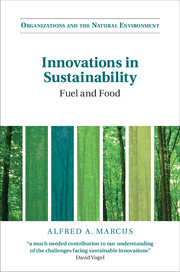Book contents
- Frontmatter
- Dedication
- Contents
- List of figure and tables
- Foreword
- Acknowledgments
- Introduction the path to sustainability
- Part I Funding sustainable startups
- Part II Business models
- Part III The macroenvironment and industry context
- Part IV Finding customers
- Part V Competition between mission and non-mission based businesses
- Concluding observations: the journey continues
- Index
Concluding observations: the journey continues
Published online by Cambridge University Press: 05 August 2015
- Frontmatter
- Dedication
- Contents
- List of figure and tables
- Foreword
- Acknowledgments
- Introduction the path to sustainability
- Part I Funding sustainable startups
- Part II Business models
- Part III The macroenvironment and industry context
- Part IV Finding customers
- Part V Competition between mission and non-mission based businesses
- Concluding observations: the journey continues
- Index
Summary
That a high percentage of the sustainable innovations discussed in this book have not yet borne fruit or even failed should not be a deterrent to sustainability innovators. Clearly, the need for this type of innovation remains compelling. Over seven billion people inhabit the planet and by the year 2050, this number is likely to grow to more than nine billion before world population plateaus and falls off.
This fantastic flourishing of the human species puts an extreme strain on nature to adequately and equitably provide for the amenities humans need. Technologically, humans are very sophisticated, which may permit the expansion of the carrying capacity of the Earth, but people also are divided into belligerent groups that make it hard for governments to take the collective action needed to sensibly address common problems. These problems are dire and involve not only protecting nature but a full array of additional issues often discussed under the rubric of sustainable development, such as fuel and food.
The premise of this book has been to examine the oft-made arguments that contributing to the solution of these problems provides business organizations with a way not only to help society but to profit. The journey to sustainability is an evolutionary process with some firms surviving and others failing. An imperfect fitness screening process, affected by political and institutional biases, sorts out the winners and losers. All of the organizations involved in sustainable innovation are subject to risk and uncertainty. They suffer because of imperfect selection.
- Type
- Chapter
- Information
- Innovations in SustainabilityFuel and Food, pp. 332 - 347Publisher: Cambridge University PressPrint publication year: 2015



